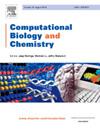Serum levels of PSA and VEGF2 as the prognosis markers for bone metastasis of prostate cancer: A retrospective study
IF 2.6
4区 生物学
Q2 BIOLOGY
引用次数: 0
Abstract
Background and Objective
Prostate cancer (PCa) is the second most commonly diagnosed cancer in males, the mechanism of PCa with bone metastasis remains unclear. In this study, we aimed to utilize a retrospective clinical study to evaluate the diagnostic value of bone metastases from PCa and provide reference values for future applications.
Methods
We retrospectively collected a total of 200 samples including 100 PCa patients with bone metastatic and 100 without from June 2019 to August 2021. Transrectal ultrasonography (TRUS) was applied for observing the microvascular blood flow in the lesion. The serum levels of prostate specific antigen (PSA), vascular endothelial growth factor 2 (VEGF2), interleukin-6 (IL-6) and Pro-gastrin-releasing peptide (ProGRP) was determined using Enzyme-linked immunosorbent assay Kit. Regression model was constructed to analyze the risk factors for PCa with bone metastasis, the prognosis value of which was evaluated using receiver operating characteristic (ROC) curves. Ultimately, dataset GSE32269 was employed for validation.
Results
The focal blood perfusion was significantly improved in patients with bone metastasis than those without (P < 0.01). The examination results indicated that PCa patients with bone metastasis had higher levels of PSA, VEGF2, IL-6 and ProGRP than non-bone metastasis (P < 0.01). Moreover, the regression analysis indicated that the four cytokines were the risk factors for bone metastasis, and the ROC curves further confirmed that PSA and VEGF2 had high value of prediction value for bone metastasis with AUC of 0.901 and 0.8519.
Conclusion
The expression of PSA and VEGF2 in serum had high prognosis value for bone metastasis in PCa patients.
血清PSA和VEGF2水平作为前列腺癌骨转移预后指标的回顾性研究
背景与目的:前列腺癌(PCa)是男性第二大常见癌症,其骨转移机制尚不清楚。在本研究中,我们旨在通过回顾性临床研究来评估前列腺癌骨转移的诊断价值,为今后的应用提供参考价值。方法:我们回顾性收集了2019年6月至2021年8月期间共200份样本,其中包括100例骨转移性PCa患者和100例非骨转移性PCa患者。应用经直肠超声(TRUS)观察病变微血管血流情况。采用酶联免疫吸附测定试剂盒检测血清前列腺特异性抗原(PSA)、血管内皮生长因子2 (VEGF2)、白细胞介素6 (IL-6)和胃泌素释放肽(ProGRP)水平。建立回归模型,分析前列腺癌合并骨转移的危险因素,采用受试者工作特征(ROC)曲线评价其预后价值。最终,使用数据集GSE32269进行验证。结果:骨转移患者局灶血流灌注明显改善(P )结论:血清中PSA和VEGF2的表达对前列腺癌骨转移患者有较高的预后价值。
本文章由计算机程序翻译,如有差异,请以英文原文为准。
求助全文
约1分钟内获得全文
求助全文
来源期刊

Computational Biology and Chemistry
生物-计算机:跨学科应用
CiteScore
6.10
自引率
3.20%
发文量
142
审稿时长
24 days
期刊介绍:
Computational Biology and Chemistry publishes original research papers and review articles in all areas of computational life sciences. High quality research contributions with a major computational component in the areas of nucleic acid and protein sequence research, molecular evolution, molecular genetics (functional genomics and proteomics), theory and practice of either biology-specific or chemical-biology-specific modeling, and structural biology of nucleic acids and proteins are particularly welcome. Exceptionally high quality research work in bioinformatics, systems biology, ecology, computational pharmacology, metabolism, biomedical engineering, epidemiology, and statistical genetics will also be considered.
Given their inherent uncertainty, protein modeling and molecular docking studies should be thoroughly validated. In the absence of experimental results for validation, the use of molecular dynamics simulations along with detailed free energy calculations, for example, should be used as complementary techniques to support the major conclusions. Submissions of premature modeling exercises without additional biological insights will not be considered.
Review articles will generally be commissioned by the editors and should not be submitted to the journal without explicit invitation. However prospective authors are welcome to send a brief (one to three pages) synopsis, which will be evaluated by the editors.
 求助内容:
求助内容: 应助结果提醒方式:
应助结果提醒方式:


